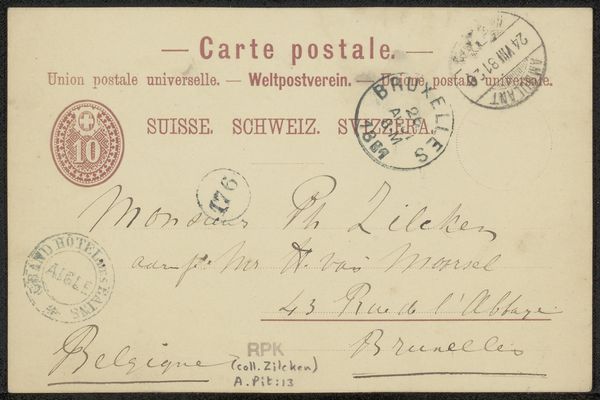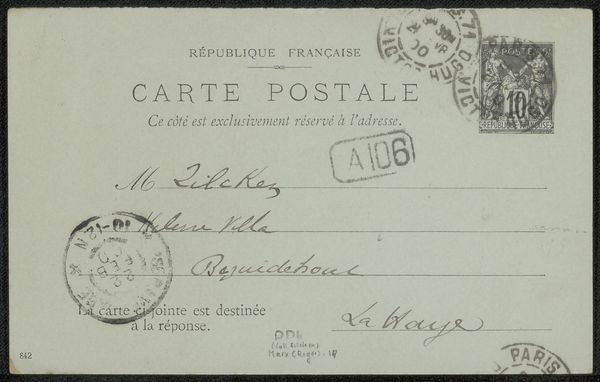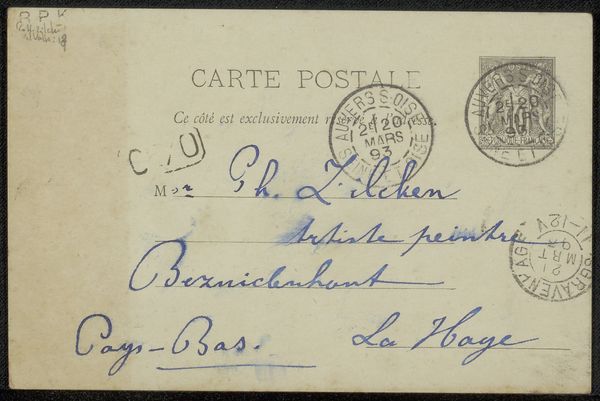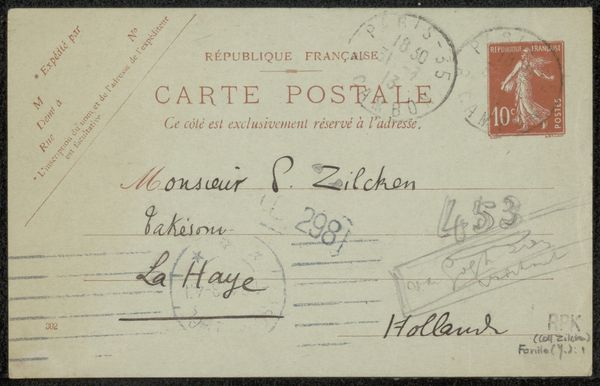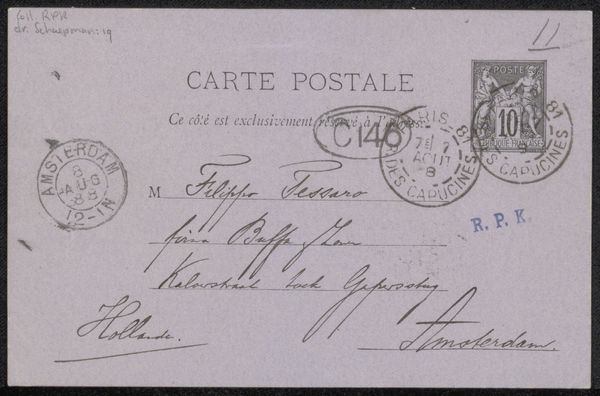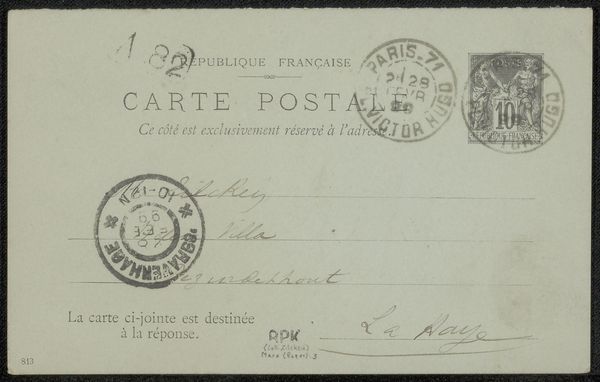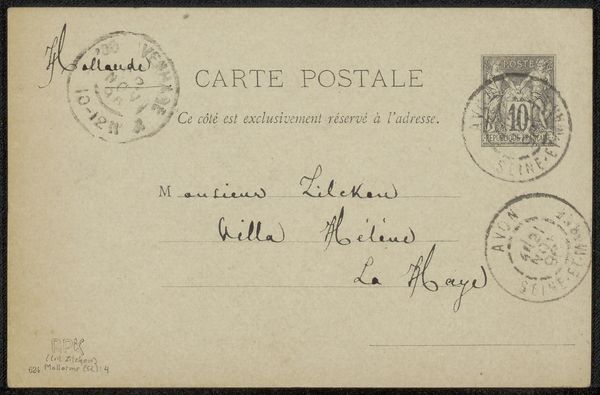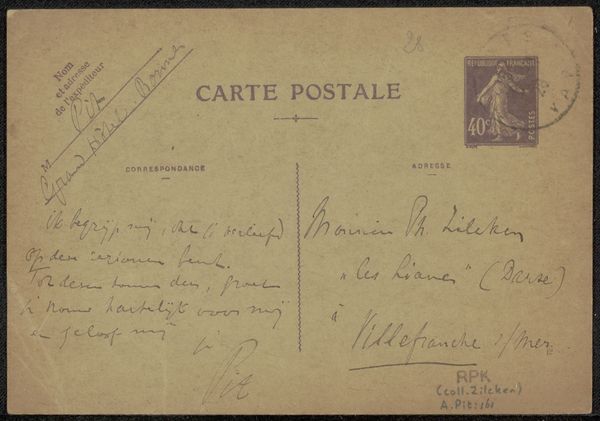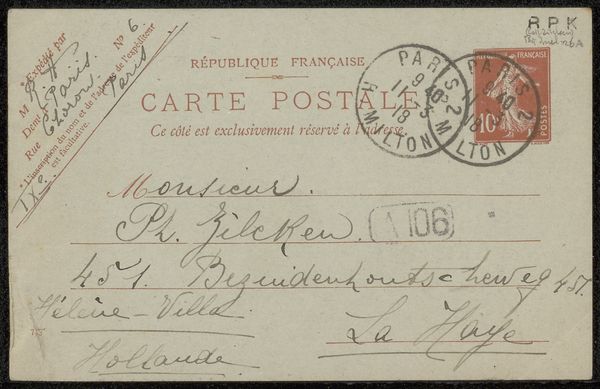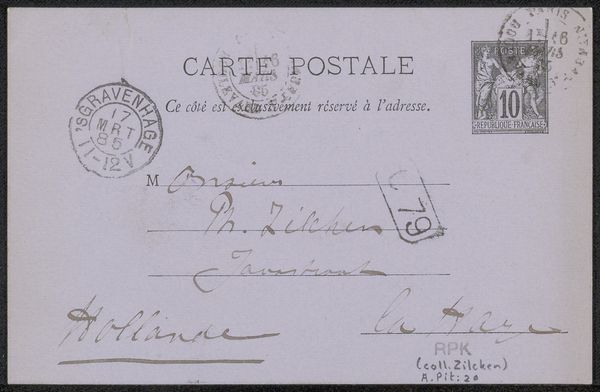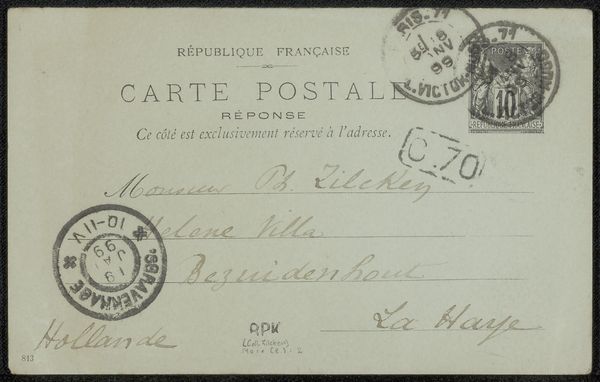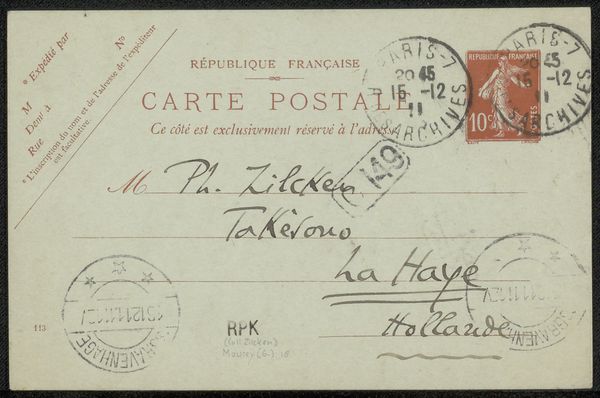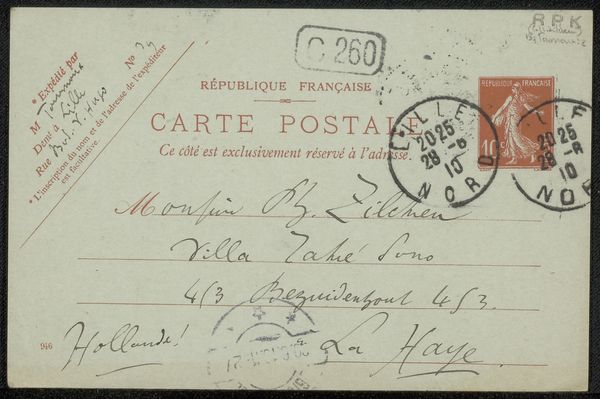
Copyright: Rijks Museum: Open Domain
Editor: So, this is "Briefkaart aan Philip Zilcken" by Charles Fuster, believed to be from before 1894. It seems to be a photograph of a vintage postcard with handwritten text. I'm struck by how much the lettering itself becomes the focus, almost obscuring the message. What do you see in this piece? Curator: Initially, I'm drawn to the interplay between the rigid structure of the pre-printed postcard and the organic nature of the hand-written script. Notice how the grid imposed by the 'address' lines intersects with the free-flowing calligraphic flourishes. The superimposition creates an interesting tension between order and expression. Do you agree? Editor: Yes, absolutely. It’s like two distinct visual languages occupying the same space, but I wonder about the faded quality and how it impacts its impact as art. Curator: Precisely. The very degradation of the photographic print—the foxing, the fading inks—introduces an element of chance and temporality, challenging any sense of a fixed or pristine artistic intention. Consider how this 'patina of age' impacts our reading of the text and transforms a utilitarian object into a potential aesthetic object. Can we isolate these elements in its appreciation? Editor: It makes me think about how even the most functional objects can become art when we start analyzing their formal qualities, like the contrast between the straight lines and cursive text or the texture of the aged paper. Curator: Indeed. Through rigorous attention to form, we’ve uncovered levels of complexity, haven’t we? This challenges simple assumptions of artistic intent, highlighting the role of accident and perception. Editor: Definitely. I wouldn’t have looked at a postcard as an example of formalist qualities until now!
Comments
No comments
Be the first to comment and join the conversation on the ultimate creative platform.
